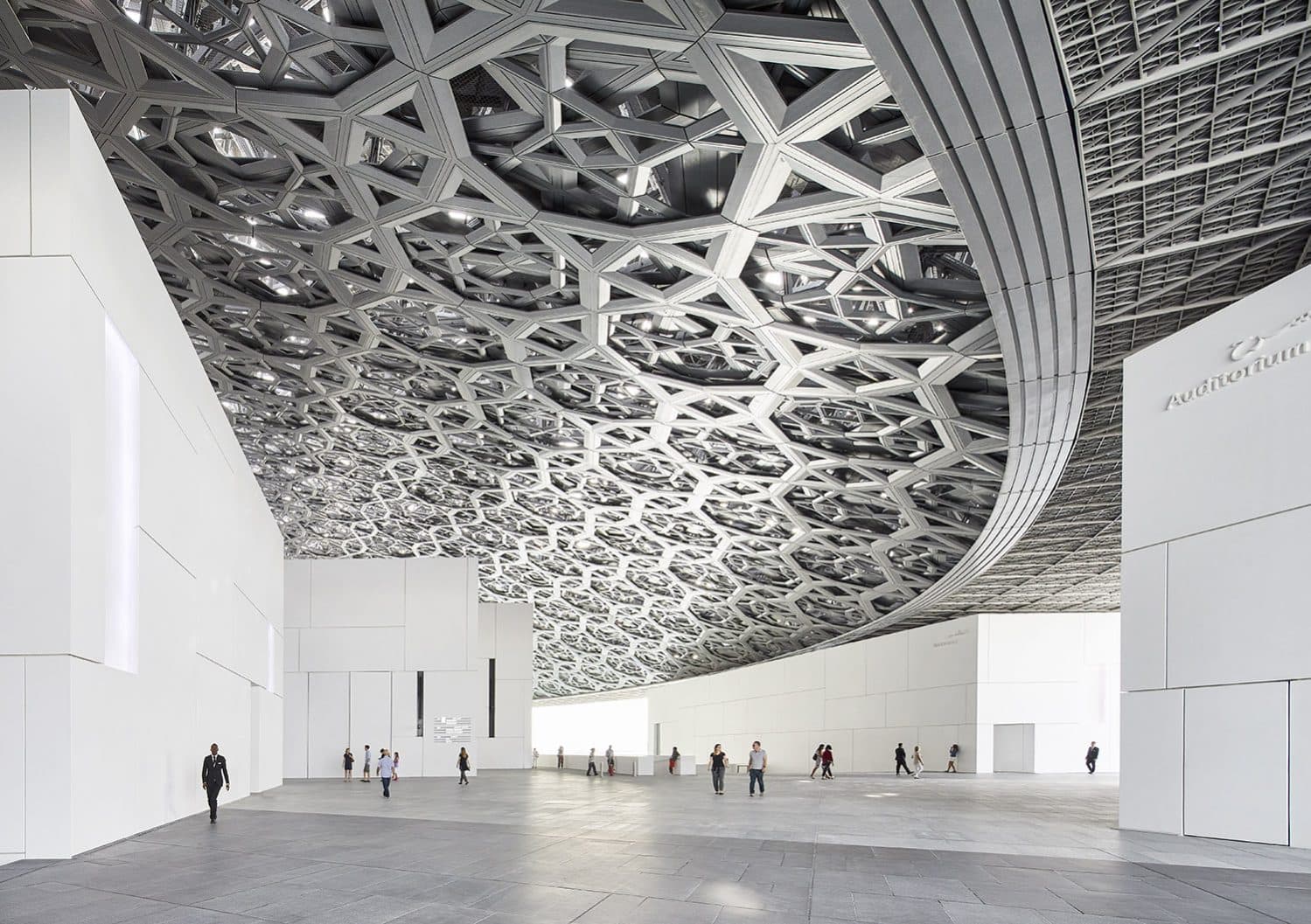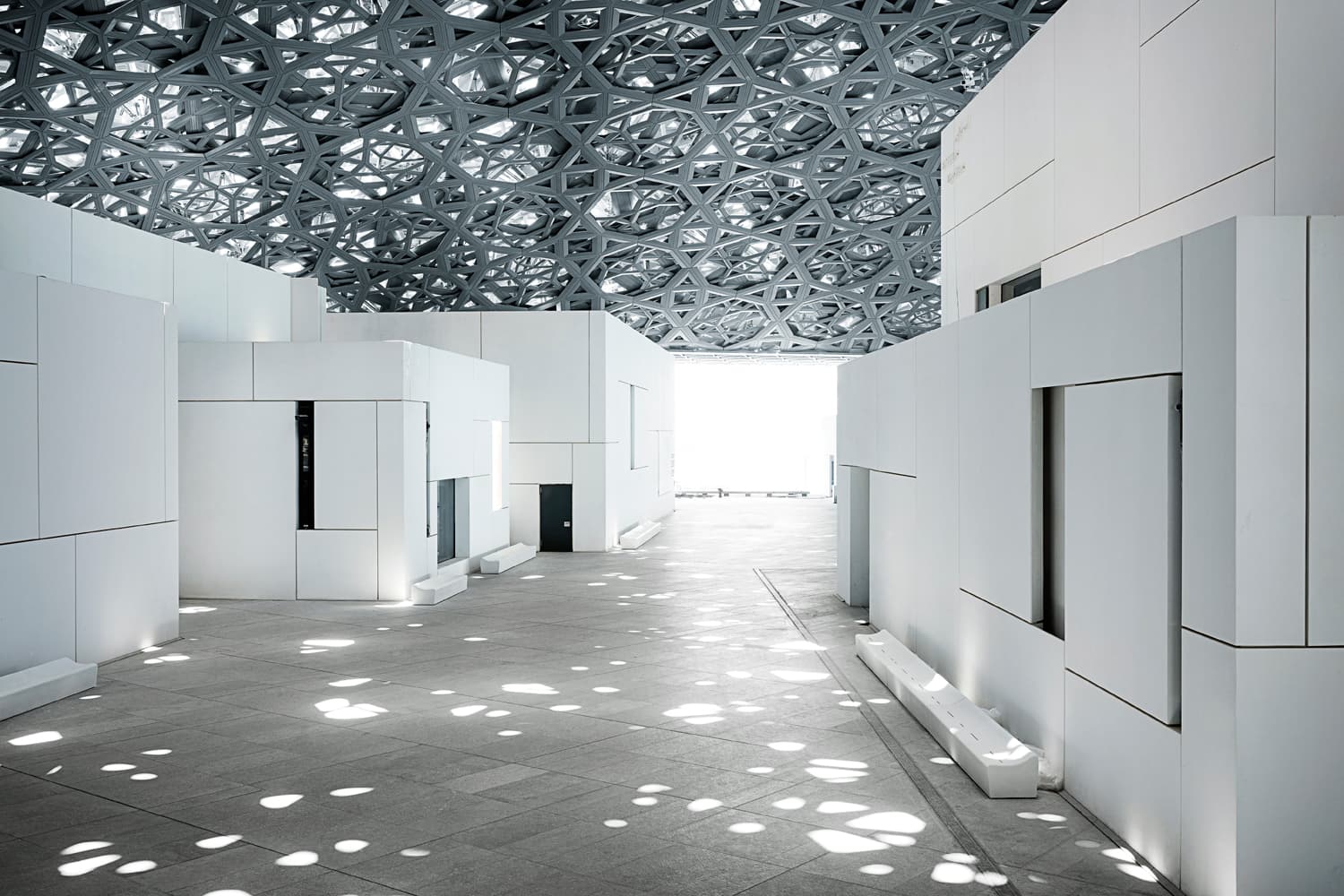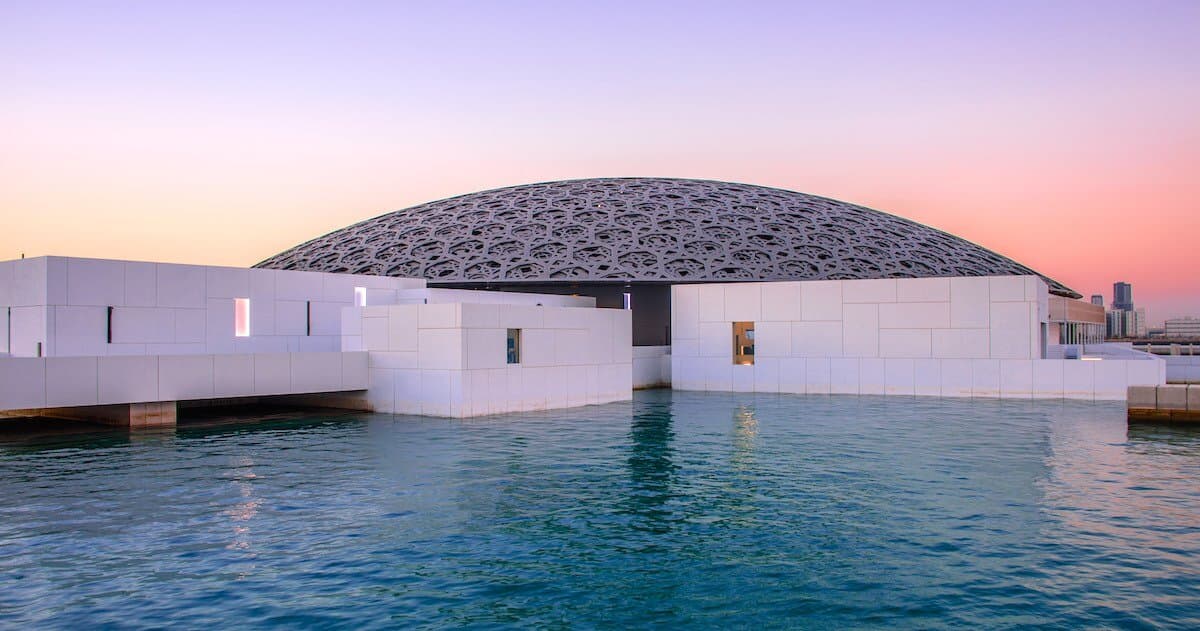The Louvre Abu Dhabi took 10 years and a billion dollars to create. Five years on, the first universal museum in the Arab World marked its fifth anniversary, on 11th of November.
This is its story:
The iconic Louvre Abu Dhabi had risen from the sand with a clear mission to foster human connections through art and nurture spiritual openness between cultures. The Louvre Museum has transformed Abu Dhabi into the capital of art and heritage for mankind, a meeting point for lovers of art, beauty, and culture from around the world. Unique in the scale of its art pieces and its architecture, the museum is unrivalled in the Gulf region, remarkably having welcomed more than 3 million people since it made its public debut. Louvre Abu Dhabi champions a fundamental universal philosophy rooted in the story of human creativity.
Focusing on what unites us on an artistic, creative, and spiritual level, the museum aims to encourage curiosity, respect, and openness between different cultures, shining a light on similar stories of humanity united by art and cultural achievements, similarities that go beyond time or individual civilisations.
This is the core philosophy that drives the art museum in all aspects. Louvre Abu Dhabi is a reference museum for the entire world, a unique project that continues to attract so many people to the UAE.

The Origins
“It took 800 years for the Louvre to become the 'Louvre', and it only took 10 years for another Louvre to be born in Abu Dhabi” says Jean-Luc Martinez, director of the Louvre Museum in Paris.
The concept of using the Louvre as a public museum first emerged in the 18th century when King Francis I started construction of the Louvre palace in 1546. Francis was a passionate art collector, and the Louvre was going to serve as his residence. Louvre Abu Dhabi was first established in March 2007, built on Saadiyat Island as part of a unique partnership between France and the UAE,with the aim of fostering cultural exchange. The purpose of the collaboration was to bring together France’s expertise in the field of art and museums complemented by the UAE’s strong passion for cultural advancement and openness. The highlight of this partnership resulted in the establishment of the Louvre Abu Dhabi Museum, a gateway to exploring the universal themes that connect and unite humanity.
Inside a Pioneering Cultural Project

The project is a universal icon for 21st-century architecture. Total built-up area of the museum is 97,000 square meters, out of which the galleries cover an area of 6,400 square meters. The galleries are resplendent and flooded in diffuse light that scatters over the spaces, muted in some corners and bright in others, culminating in a cascading show of light with thrilling effects.
The museum was built over eight years and involved a complex construction process and engineering challenges due to the heavy marine works and difficult finishes for the gigantic steel structure. The vast dome structure is made up of eight layers and seems to be floating on top of the buildings, resting on four hidden piers.
The dome measures 180 meters in diameter and reveals a web patterned design for the roof which consists of 7,850-star shapes, eight layers deep. Situated on Saadiyat Island, the structure is surrounded by water, and the 55 buildings are joined by waterfront promenades under the dome of the museum, where visitors and passers-by can immerse in the scenic panorama after a tour inside the museum.
A Rain of Light Wrapped in Steel
It has been said that Jean Nouvel, the architect who designed the museum, never does the same work twice. No two buildings of Nouvel’s ever look alike because he works with individualism in art, to render each creation as a specific project in the context of its cultural and historical place. Indeed, with Louvre Abu Dhabi, he created quite a masterpiece. The intricate geometric design of the dome, which is wrapped in steel, was greatly influenced by traditional Arab architecture. The sunlight flooding through the dome symbolically evokes the rays of sunlight passing through the fronds of palm trees in an oasis. If there is a common visual element across Nouvel's architectural creations, it is his use of geometry and light. These are the elements that dominate his thematic design for Louvre Abu Dhabi.
Nouvel nurtured a particularly sensitive reading of the relationship between the Middle East and Western cultures, which he perfectly illustrates with the visually stunning dome. It was a challenge to deliver his concept and bring to life a building that is not only culturally relevant, enduring the desert climate, but also built around the huge dome, which becomes the structure’s defining feature, regarded as a respite from the desert heat. Nouvel drew his inspiration from three natural elements that he encountered when he first visited Saadiyat Island in 2005: Sand, Sea and Sky.

Louvre’s Art Collection – A Journey through the Manifestation of Human Spirit
See Humanity in a new light – this is what the posters lining up the road to Saadiyat Island’s museum read.
This phrase becomes so literal as soon as you step inside, where the narrative is different for each room. 23 galleries are narrating the story of humanity with the collections divided into twelve inspiring chapters, such as The First Villages, Civilizations, and Empires, A New Art of Living, and Challenging Modernity, taking us on a journey through the history of time. The themes that take us throughout humanity dive into works from prehistoric artifacts to contemporary artworks. Louvre Abu Dhabi has more than 600 artworks on display inside the galleries, along with 300 works that are on loan from 13 prestigious French institutions. The museum’s head curator, Jean Francois Charnier decided not to arrange the pieces by place of origin, but rather chronologically and thematically, inviting visitors to connect and identify with the stories being told, from a new perspective.

Louvre Abu Dhabi has been commissioning its own collection which features the museum’s first acquisition – a 1922 Piet Mondrian painting and Bactrian Princess from Central Asia, originating in the 2nd millennium BCE. To mark the museum’s fifth anniversary this year, Renaissance icon Leonardo da Vinci has arrived at Louvre Abu Dhabi with his most renowned masterpiece – Saint John the Baptist, available for viewing in Chapter 7 of the museum’s gallery, starting November 8th onwards. Leonardo Da Vinci was previously featured in Louvre Abu Dhabi with La Belle Ferronniere, on loan from Louvre Paris until 2019, while other masterpieces from the permanent collection include Paul Gaugin’s Children Wrestling (1888) and Edouard Manet’s The Gypsy.
In the run up to its fifth anniversary this November, the museum has announced a line up of cultural events and exhibitions for the upcoming 2022-2023 season. Louvre Abu Dhabi remains committed to serving the public with special stories about celebrating cultural connections and fostering personal moments of discovery through art.
Happy Anniversary Louvre!
Related Blogs: